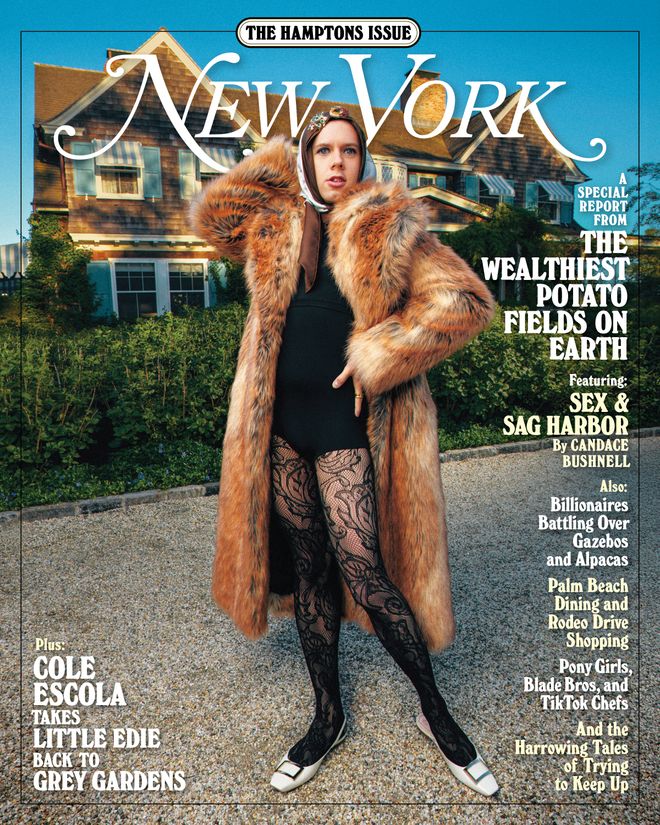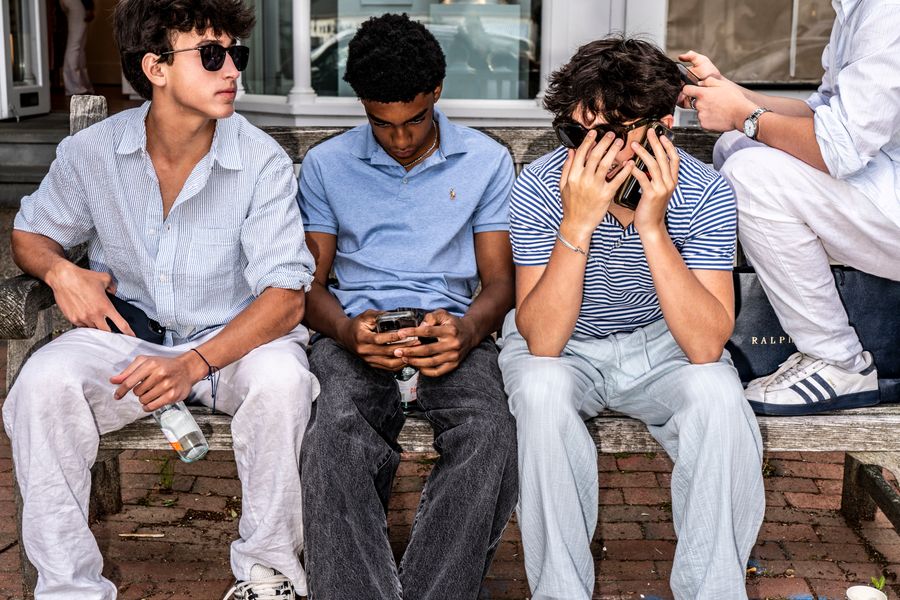Can the Billionaires Save East Hampton’s Main Street?

When Ralph Lauren opened its fourth East Hampton store in 2008, a lot of locals wondered — how many Ralph Lauren stores did one small village really need? But these days, its local presence, now dialed back to three stores, seems downright quaint considering what has opened in the village since: Gucci, Valentino, Louis Vuitton, Prada, Chanel, Loewe, Zegna, Manolo Blahnik, Cartier, Loro Piana. A Rolex is opening this year in the building where Chanel spent the past three summers.
Luxury shops have been replacing East Hampton’s mom-and-pop stores for decades now — a 1995 New York Times article bemoaned its being “easier to get an $800 cashmere sweater on Main Street than a spool of thread” — but even jaded locals like Valerie Smith, the owner of the Monogram Shop, who has been in the village for the past 28 years, admit that the situation has become a little absurd. Many people told me things changed after COVID, when these brands followed their clients out East. “That’s when I saw it become LVMH Row out here,” says Spencer Planit, a retail broker at RTL.
The Hamptons Issue

See All
“All the high-end people really want to be in East Hampton — that is the fact,” says Hal Zwick, a Compass retail broker who’s done deals in town for two decades. Competition for top spots is intense — there are currently zero retail vacancies on the prime streets in the village, Zwick tells me, and none of the luxury retailers wants to go beyond the Stop & Shop, which is only about a block down Newtown Lane from the Louis Vuitton–Prada intersection. Retailers are doing whatever they can to lock down their spots: A few years ago, Bernard Arnault bought 1 Main Street for $22 million, replacing Cartier, and this spring, the Prada building sold to an undisclosed buyer for $10.25 million, nearly double what it went for in 2022. It’s unclear how much money these stores are making — rents are $150 to $200 per square foot, and many of them close up for the winter. But resort-town boutiques have a reputation for being lucrative bases for sales associates to host events for their VIP clients. Donna McDonald, who co-owns Park Place Wines & Liquors, says they may not be the loss leaders everyone assumes: This past Fourth of July, Prada’s staff came in and loaded up on Champagne. “We hit our summer sales numbers,” staff told her.
With so much of the prime real estate taken up, many of the local stores (what’s left of them, anyway) have moved near the village parking lot — the backside of Main and Newtown by the Stop & Shop. The parking lot “has more life than the rest of the village,” observes one local.
“It’s not that we shouldn’t have Prada and Gucci,” says Bess Rattray, a 13th-generation East Hamptonite who started the Anchor Society, a nonprofit dedicated to supporting and creating local retail, nearly four years ago. “We just need more of a mix.”
When I walked around the village with Rattray one recent morning, she told me that she had decided to focus on what the town could have: a general store that sells “shoelaces, envelopes, good bread, coffee — a place for neighbors to say ‘hi’ to each other.” Most people from old East Hampton families like hers “feel that it’s a lost cause” to fight off the newcomers, she says. “They thought it was a lost cause 40 years ago.” But after researching what similar communities have done to preserve their shops, she decided that it wasn’t. Nantucket’s Remain, an organization started in 2008 by Wendy Schmidt, the wife of former Google CEO Eric Schmidt, now owns six buildings on the island, which are occupied by a bookstore, a bakery, a market, and other community-minded businesses. Nantucket still has the appearance of the charming village it once was.
On an East Hampton bench at 1 p.m. on a Sunday.
Photo: Mark Peterson/Redux for New York Magazine
Here was a problem where East Hampton’s riches, she realized, could work in its favor: The Anchor Society could “harness community wealth.” It’s been scouting buildings for some time now, considering, but deciding against, the Prada storefront when it was on the market for three years (members were looking for a stand-alone building that was more atmospheric, says Rattray, like a general store you’d find in Vermont with old wooden floors and creaky cabinets). Another space had the right vibes but was too far from the center of the village. While the society waits for the right one, planning to hit up the billionaires when it conducts a capital campaign to buy it, the billionaires have started going it alone.
It’s all feeling a little Schitt’s Creek. In May, Larry Gagosian announced that he was buying BookHampton. The Southampton Playhouse, closed for the past five years, reopened this winter after Aby Rosen and his son Charlie restored it, built out an Imax theater, and launched a nonprofit to run it. (It now has canned espresso martinis, and the bathrooms are a gift of Lizzie and Jonathan Tisch.) Nearby, in Sagaponack, the owner of the newly reopened general store is Mindy Gray, the wife of Blackstone COO Jonathan Gray. After buying the store, she told me one of her first meetings was with Ina Garten. “I said, ‘What are your thoughts on whether this should be open year round or only in the summer?’ She said, ‘Absolutely year round, but you’re going to lose your shirt ten months of the year.’”
I asked if she saw the store as a philanthropic endeavor. “I just think it’s worth it for the community,” she said. And maybe, she added, it would inspire others to do the same. The deli on East Hampton’s Park Place is up for sale. Steven Spielberg? Daniel Loeb? Anyone?
See All
Source link







